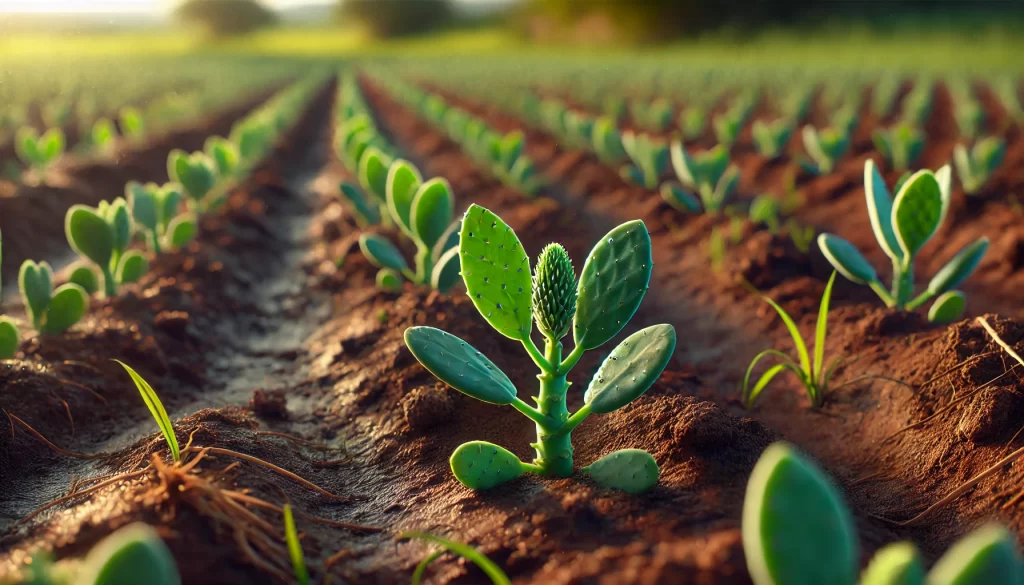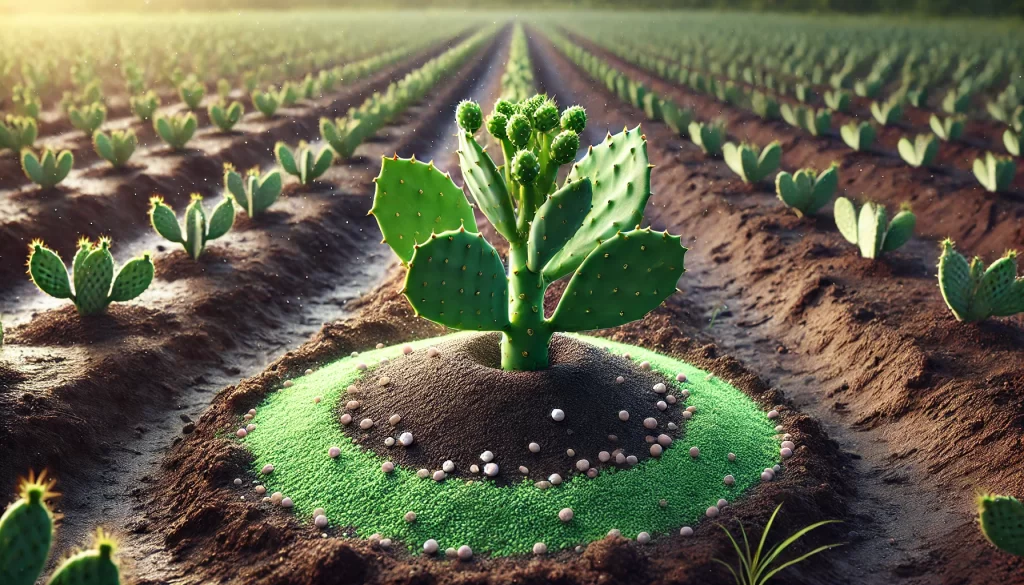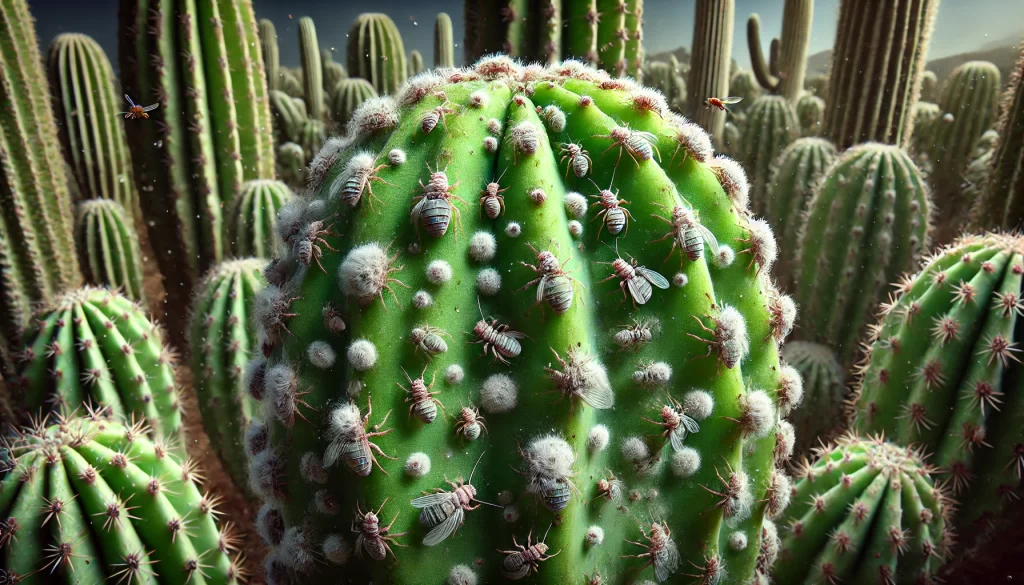The Nopal: A Versatile and Healthy Food
The nopal (Opuntia spp.) is a cactus plant widely used in cuisine, especially in Mexican cooking. This superfood stands out for its numerous health benefits, such as its high fiber content, its ability to regulate blood sugar, and its low calorie content. To maximize the quality and quantity of nopal intended for human consumption, proper crop management is essential. Below are the best practices for cultivating nopal for food purposes.

Ideal Conditions for Nopal Cultivation
Site Selection and Suitable Climate
The nopal is an extremely adaptable plant, capable of growing in various soil types and climatic conditions. However, to optimize the production of edible pads, it is preferable to cultivate it in well-drained soils with a pH between 6.0 and 7.5. The addition of organic matter, such as compost or manure, can significantly improve soil fertility, promoting greater growth and quality of the pads. The ideal climate for nopal cultivation includes warm temperatures, with an annual average of 18°C to 25°C, and moderate rainfall, avoiding areas with a risk of prolonged frost.
Soil Preparation and Nopal Planting
To ensure good establishment of the nopal, proper soil preparation is essential. This includes light tillage to improve soil structure and eliminate weeds that may compete for nutrients and water. The pads selected for planting should come from healthy and mature plants. It is recommended to let them dry for a few days before planting to avoid rot problems. The spacing between plants should be 2 to 3 meters, and between rows 3 to 4 meters, allowing good development and easy access for management and harvesting.

Irrigation and Water Management
Nopal Water Requirements
Although the nopal is a drought-resistant plant, proper irrigation management is crucial to ensure quality production. During the establishment stage, it is important to keep the soil slightly moist to favor rooting of the pads. Once established, the nopal requires occasional watering, especially during prolonged drought periods. It is recommended to perform deep and spaced waterings, which encourage the development of a deep root system and a more resilient plant.
Nopal Nutrition and Fertilization
Nutritional Requirements
Nopal is not particularly demanding in terms of fertilization, but proper nutrition is key to optimizing the production of high-quality pads. Nitrogen (N) is essential for vegetative growth, promoting the development of new pads. Phosphorus (P) and potassium (K) are important for strengthening the root system and improving plant resilience.
Fertilization Strategies
- Base Fertilization: Apply well-decomposed compost or manure at planting time to improve soil structure and provide essential nutrients.
- Maintenance Fertilization: During the first years, apply balanced fertilizers (NPK) to promote vigorous growth. As the plant matures, adjust applications based on soil analysis to maintain consistent pad production.

Pest and Disease Management
Main Nopal Pests
Nopal can be affected by several pests that decrease its yield and quality. The main pests include:
- Cochineal (Dactylopius coccus): This pest feeds on the sap of the nopal, weakening the plant and promoting the appearance of fungi. Cochineal is easily identifiable by its white cottony appearance.
- Nopal Worms (Marmara spp.): These worms bore into the pads, leaving tunnels inside, which causes the pads to fall and reduces product quality.
- Nopal Weevil (Cactophagus spinolae): This beetle bores into the pads to lay its eggs, and the larvae feed on the inside, causing significant damage.
Pest Control Strategies
- Regular Monitoring: Frequently inspect plants to detect pest presence early.
- Biological Control: Introduce natural predators, such as parasitic wasps and ladybugs, that feed on pests.
- Chemical Control: In case of severe infestations, use specific insecticides, following technical recommendations to minimize environmental impact.
Common Diseases in Nopal
Nopal is also susceptible to certain diseases, especially in high humidity conditions. The most common diseases include:
- Root and Collar Rot: Caused by fungi of the Fusarium genus, this disease causes the roots and base of the pads to rot, weakening the plant and, in severe cases, leading to its death.
- Black Spots on Pads: Caused by various fungi, these spots can reduce the commercial quality of the pads and affect photosynthesis.

Disease Control Strategies
- Adequate Drainage: Ensure good soil drainage to avoid waterlogging, which promotes the onset of diseases.
- Sanitary Pruning: Remove and destroy affected pads to prevent disease spread.
- Fungicide Use: Apply specific fungicides when weather conditions favor disease development.
Harvest and Post-Harvest Management
Maturity Indicators
Nopal is harvested when the pads reach a suitable size for consumption, generally between 20 and 30 cm in length. The pads should be tender, with a bright green color, and without pronounced spines.
Harvesting Techniques
Harvesting is done manually, using gloves and tools such as knives or pruning shears to cut the pads close to the plant. It is important to handle the pads carefully to avoid damage that could affect their freshness and quality during storage and marketing.

 AgronoBlog – Agriculture Blog
AgronoBlog – Agriculture Blog